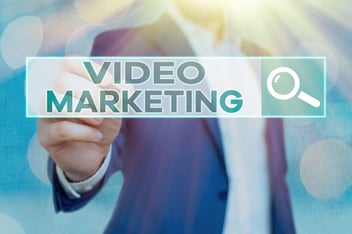Good marketing starts with knowing your audience. Great marketing is demonstrating a deep understanding of your audiences' unique needs.
Considering very few businesses (if any) can afford to target everyone – having a target audience can effectively filter your options. Not to mention, you can focus your efforts on the people who are most likely to care about your brand. This means tailoring your digital ads, social media posts, landing pages, blog articles and overall strategy to the specific needs, behaviors, and concerns of one or several different groups. This is a much more affordable and efficient approach to reach potential customers!
So how exactly should you go about finding your target audience? Also known as buyer personas, we use a systematic approach to create representations of your ideal customer based on market research and real data about your existing customers. Personas help us internalize the ideal customer we're trying to attract and relate to our customers as real humans.
Re-examine your existing customers
Who are your current customers, and why do they buy from you? Look for common characteristics and interests. Be sure to consider factors like age, buying power, geographical location, and marital status. Talk to your sales team to get feedback on the customers they have interacted with most. See what type of problems the customer was having before coming to you.
There are also a number of great tools available on platforms you are already using to re-examine your current customers. For example, Facebook Audience Insights gives you aggregated information about people connected to your Page– so you can create content that resonates. This includes age and gender breakdowns, education levels, job titles, relationship statuses and more. With Google Analytics, you can also get a breakdown of your website visitors, including age and gender of your users, along with the interests they express through their online travel and purchasing activities.
Conduct a few interviews
One of the most effective ways to gather information about your audience is to interview a customer or potential customer to discover their experience of your product or service. Reach out to your existing customer base and tell them you would love to hear their feedback and/or collaborate. Keep in mind it’s important to get insight from people who had and positive AND negative experience with your brand.
You can also try gathering some information outside your database by asking for referrals. This means reaching out to your network to find people you'd like to interview. It’s also beneficial to get the input of people who have not yet interacted with your company by taking advantage of online surveys. Make it easy to say yes by offering an incentive for completing the survey.
We highly recommend using Hubspot’s Buyer Persona Template as a starting point for conducting interviews! Download it here.
Pull data from demographic trends and reports
It is very likely that your general audience has been the subject of a research project aimed to benefit relevant companies in the industry. These reports and studies are highly beneficial when it comes to creating a buyer persona. A great starting point is something like Pew Research Center which is “a nonpartisan fact tank that informs the public about the issues, attitudes and trends shaping the world.”
For example, a new housing development in Texas should focus on a target audience of potential homebuyers around the age of 46 with an average median household income of $100,000 who are interested in living closer to friends or work. You can also narrow down to those interested in new construction homes and communities with amenities. We gathered this insight from reports such as the 2019 Texas Homebuyer Report by Texas Association of Realtors.
• • •
These 3 steps should give you a solid start to narrowing down your target audience. And once you’ve assembled your data into a buyer persona, you can add it right into your HubSpot Marketing Platform. Just follow this step-by-step setup guide. For more help with Inbound Marketing, just ask On-Target! Still have questions? Try this...


